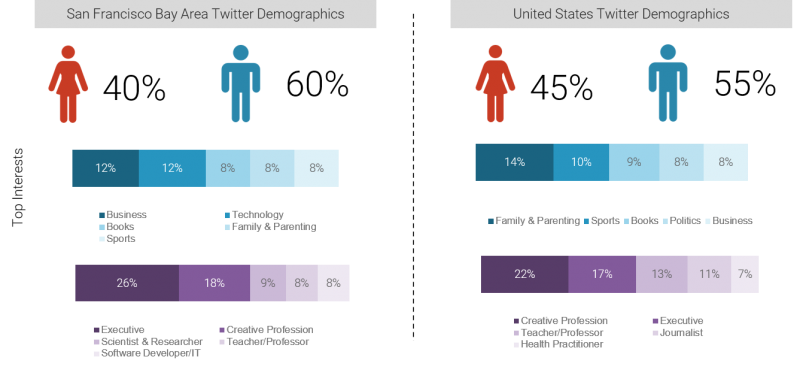We’ve read about how everyday people are susceptible to conspiracy theories and how a demonstrably false idea like the Earth being flat can gain traction. Specific reasons for why people believe what they believe are still a mystery, but it’s clear that false beliefs can be driven by the kind of overload of information that occurred during the coronavirus pandemic.
Around 7 in 10 Americans use social media for entertainment, connection with others, finding news, and sharing personal stories and information, according to Pew research. Although social media platforms have taken measures to limit the amount of incorrect information published on their platforms, an “infodemic” of erroneous COVID-19 information has made social media a major spreader of misinformation about the virus.
In the early months of the pandemic, the KQED Science team and researchers at Texas Tech University wanted to better understand major misinformation narratives related to COVID-19 discussed online in the San Francisco Bay Area, and how they compared to the United States as a whole. We were specifically interested in sentiment around the vaccine and whether gaps in knowledge existed that could be addressed in KQED content creation.
Social Media Research Method
One key analysis we undertook concerned the conversation on social media, mainly Twitter, around COVID. KQED worked with the researchers and analysts at social media listening platform Brandwatch to answer five main questions:
- What is the volume of conversation among different audiences over time and on different online platforms around specific key narratives?
- What are the engagement metrics of news articles on COVID-19 disinformation narratives?
- What are the volumes of mentions per narrative in the San Francisco Bay Area versus the entire U.S.?
- What is the total reach/impressions of narratives in San Francisco versus the U.S.?
- What is the sentiment expressed toward vaccines?
To find the answers, we captured Twitter conversations in both the San Francisco Bay Area and the U.S. between March 1 and Oct. 20, 2020. In the initial stages of this research, Brandwatch identified the top 10 misinformation topics around COVID-19. These falsehoods included:
- The pandemic was caused by 5G technology.
- Drinking bleach, methanol, or ethanol could cure COVID, posited after former President Donald Trump suggested that injecting a disinfectant into people’s bodies might eradicate the virus.
- The pandemic is a hoax.
- The virus was created in a lab, as seen in the conspiracy theory film “Plandemic,” a possibility that was dismissed by most scientists at the time but is now being considered by U.S. intelligence agencies.
- Wearing face masks can cause carbon dioxide poisoning.
- COVID-19 is only as dangerous as the seasonal flu.
- Tracking devices were added to the vaccine.
- The virus originated in “bat soup.”
- Packages from overseas can spread the virus.
- Garlic and other foods can help kill the virus.
From these, our KQED Science team narrowed down the list to focus on misinformation about masks, vaccines, virus origins, and comparisons between the coronavirus and the flu.
Demographics
Overall COVID-19 discussion on Twitter was 40% female and 60% male within the San Francisco Bay Area. In comparison, the national average was 5% higher for females and 5% lower for males. Twitter derives demographic information from users that self-identify in their Twitter bios. From this information, Twitter can also determine professions and interests. The top professions engaging in San Francisco Bay Area COVID conversations were executives, scientists/researchers, and teachers/professors. Top interests were business, technology, and family and parenting. The conversations drew many expert voices, most of whom attempted to dispel myths and raise awareness around scientific facts.

Key Findings
Hydroxychloroquine was the topic that sparked the most misinformation spread online (nearly 19,000 posts locally) and was one of the more politicized subjects. Most of the misinformed conversation was fueled by President Trump, who advocated for the drug to be used for COVID-19 recovery, contrary to scientific evidence. Debate between health care professionals also occurred online, with varying opinions about the drug’s efficacy for the virus’s treatment. Harvey Risch, an epidemiology professor at Yale University, penned an opinion piece in Newsweek in July 2020 advocating for the drug’s use in treatment, fueling the online debate.
Like hydroxychloroquine, ingesting bleach or other household detergents became a conversation after Trump suggested injecting disinfectants as a potential cure at an April 2020 White House press conference. The conversation around this topic mostly involved voices urging the public not to take Trump’s idea seriously. Critics shared the dangerous consequences for anyone who did so and also posted news articles from around the country citing incidents of Americans actually ingesting bleach and other cleansers.
COVID-19’s similarities to the influenza virus also stirred controversy online and fueled misinformation (nearly 2,000 posts locally). Those who were skeptical about the seriousness of the coronavirus compared death rates and other data points with those for the flu as evidence that the two viruses were similar. They also pointed to Ebola virus and swine flu outbreaks, which eventually dissipated. Experts also entered the discussion to raise awareness of why the novel coronavirus couldn’t be compared to other viruses, citing different symptoms, infection rates and transmission paths.
The virus's bat-related origins, specifically the idea that transmission to humans had occurred through “bat soup,” was the topic that involved the most conspiracy theories, sparking racially insensitive discussions and misinformation. The main conspiracy theory shared was that an employee from the Wuhan lab spread the virus to a nearby animal market. Asian culture, cuisine, and general health were questioned and criticized as a result. Multiple experts and advocates entered the discussion to try to address the racism and dispel the myths. Scientists also shared the dangers of this narrative’s rhetoric by using examples from the past, as occurred during the Spanish flu pandemic and West Nile virus outbreaks.
Finally, misinformation around mask exemption cards became a topic of heated debate. Multiple experts and advocates were quick to debunk fake mask exemption cards after various news sources highlighted cards that were unofficial. Per the cards’ instructions, which had no legal weight, cardholders could forgo wearing a mask for health or other personal reasons in stores and other public areas. Those that disseminated the misinformation often shared that only sick people needed to wear masks to prevent the spread of COVID. Conspiracy theorists also shared misinformation that face masks were ineffective. Dr. Anthony Fauci was the person mentioned most frequently within this topic, and he was often criticized for stating at the beginning of the pandemic that the public didn’t need to wear masks.
Vaccine sentiment
Just over 8% of the Bay Area vaccine discussion was positive in sentiment, the same as the national average, before the vaccine were in use. However, San Francisco’s negative discussion about a COVID-19 vaccine was less than the nation’s (23% in San Francisco, 31% for the U.S.). When looking at specific emotions, conspiracy theories and other misinformation about vaccines drove a lot of “sad” and “disgust” perceptions among San Francisco residents, with most sharing their disapproval of misinformation being shared. However, it also drove expressions of “joy” in higher numbers than the nation as a whole. These residents were mostly hopeful that a vaccine would help end the pandemic. Sentiment is based upon emotive language used within the post and is detected by automatic keyword-based searches.
Reflections
The sheer number of conversations disseminating misinformation about the virus in 2020 was disheartening but not surprising. It’s refreshing, at least, to see some on Twitter come together to help dispel myths that emerged. This “infodemic” on social media makes it even more important for news organizations to report evidence-based information during a health crisis. We continue to be motivated and inspired to create content that is informative, accurate, timely, and reliable in order to fill knowledge gaps in our communities about the virus.
You can read the full report here and attached below.

For more KQED coverage on the coronavirus, see here.
